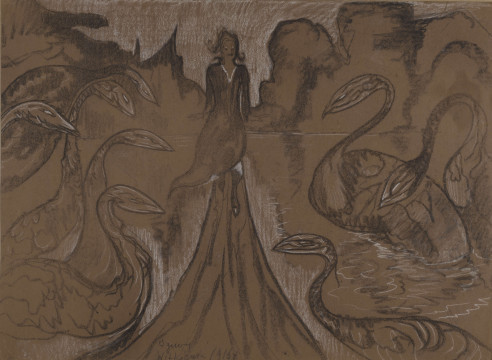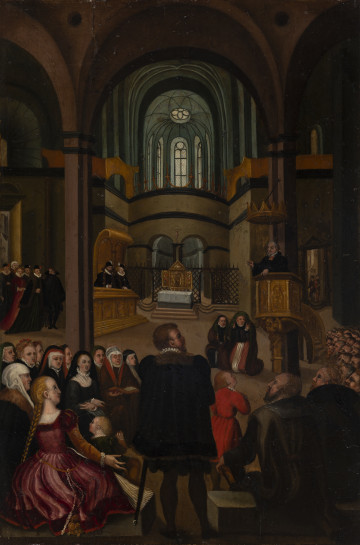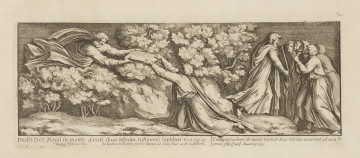
Composition with swans
1916
National Museum in Lublin
Part of the collection: Stanisław Ignacy Witkiewicz
The work of Witkacy - Stanisław Ignacy Witkiewicz (1885-1939), a painter, draughtsman, photographer, playwright, philosopher and art theoretician - is one of the most original and distinct phenomena in 20th century Polish art. In his theoretical considerations, contained, among others, in Nowe formy w malarstwie i wynikające stąd nieporozumienia [New Forms in Painting and the Resulting Misunderstandings], Witkacy preached the "insatiability of form" and its absolute primacy over content. Despite this, quite often in the artist's works there are clear literary references, and the composition conceals a specific content - as in the case of Kompozycja z łabędziami [The Composition with Swans], kept in the National Museum in Lublin, or other works by the artist - Monolog grabarza z Hamletem [The Gravedigger's Monologue with Hamlet] or Kuszenie św. Antoniego [The Temptation of St Anthony]. It can be assumed that the second of the "Lublin" compositions, belonging to Witkacy's early works, undated and without an authorial title, may also refer to a literary work. Witkacy depicted two figures in the scenery of a mountainous landscape - a man in a festive costume, a wig, with a sword at his side. The blush on his cheek and his raised hands betray strong emotions, probably caused by his relationship with the inaccessible, upturned woman with flaming red hair, portrayed in a black dress revealing her back. Perhaps the performance, tinged with the grotesque vision of the world so characteristic of Witkacy, conceals biographical threads and echoes of the two-year stormy love affair of the young artist with Irena Solska - an outstanding theatre actress and muse of Young Poland painters, called by Boy-Żeleński "the egeria of symbolism, modernism, decadence". Embittered by the break-up, Witkacy created a series of portraits of Solska; he also made her the prototype of the opera singer Akne Montecalfi - the perverse femme fatale from the novel 622 upadki Bunga, czyli Demoniczna kobieta [622 Downfalls of Bung, or Demonic Woman]. Akne, the source of all evil, is at the same time a curse for the young Bung, the artist's alter ego, who is in love with her.
Author / creator
Dimensions
cały obiekt: height: 65,4 cm, width: 50 cm
Object type
drawing
Technique
coal
Material
paper, coal
Creation time / dating
Creation / finding place
Owner
The National Museum in Lublin
Identification number
Location / status

1916
National Museum in Lublin

3. ćwierć XVI wieku
National Museum in Szczecin

1650 — 1670
National Museum in Szczecin
DISCOVER this TOPIC
National Museum in Szczecin
DISCOVER this PATH
Educational path